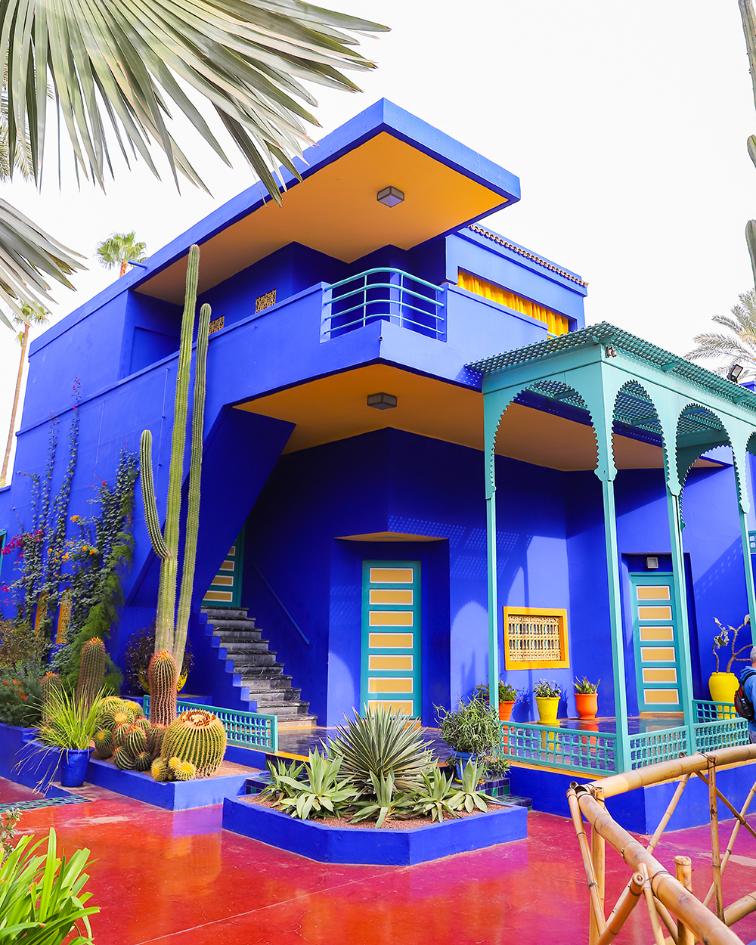Session is about to expire
Your session will timeout due to inactivity, please choose to continue your session if you’d would like to continue.
Perfect for: Art and nature lovers
This one-hectare botanical garden – which contains a psychedelic swathe of 300 plant species from five continents – was designed by the French artist, Jacques Majorelle (1886-1962) over a period of almost 40 years, and incorporates a sumptuous Cubist villa made in the 1930s by French architect Paul Sinoir.
Marjorelle was heavily inspired by the cobalt blue tiles he saw on his first visits to Marrakech and he used this colour extensively throughout his garden. Sinoir painted the house the very same shade and prior to his death, Marjorelle patented the shade, bleu Marjorelle.
In the 1980s the property was purchased by world-renowned fashion designers Yves Saint-Laurent and Pierre Berge and now houses the Berber Museum, an electric-blue art deco studio displaying over 600 indigenous artifacts.
Perfect for: Water babies
There’s not a lot on Earth more mesmeric than a winsome waterfall and Ouzoud Falls is a collective name for several near the Middle Atlas village of Tanaghmeilt.
The highest waterfall in North Africa, it’s truly rare to experience a waterfall of such magnitude in such a barren landscape. In fact, it’s impossible not to stare in awe at nature as it crashes through the reddish clay and green vegetation and empties into the El-Abid River’s gorge below.
Day trips from Marrakech involve journeying through rolling foothills and olive groves, river crossings on barges, amusing tet-a-tets with barbary apes and plenty of free time to frolic in the waterfall..
Perfect for: Beach time with a view
One of the most unique beaches in the world – and annual contender on the “world’s best beaches” list – Legzira beach is a coupld of hours north of Marrakech and it’s a spectacular natural wonder with distinct sedimentary rock arches carved into the cliffs by the tides.
You can park at the top of the cliffs and then take a short but fairly steep climb down to the beach which runs for about 8km. Many tourists prefer to visit in the evening as the rocks glow a spectacular red colour, but most will visit during the day with picnics or refresh at the on-site cafes.
Perfect for: Cine-geeks and adventurers
Aït Benhaddou is a wondrous fortified village – or ksar – and point of strategic significance between the Sahara and Marrakech that’s been a UNESCO World Heritage Site since 1987.
It has serious cinematic vibes. Game of Thrones, Gladiator and Lawrence of Arabia all used it as a filming location and you half expect to see a bedraggled Indiana Jones emerge from one of its many doorways with a shifty monkey on his shoulder.
Made entirely of clay, it’s only sparsely inhabited these days with a few families who live on more modern dwellings on the other side of the river making their living from agriculture and tourism. There’s also some shops, cafes and museums.
Visiting early in the morning is advised before it gets too busy and too hot to explore freely.
Perfect for: Culture vultures
The Hassan II Mosque in Casablanca is a thing of breath-taking architectural beauty that dominates the skyline of this somewhat overlooked Moroccan city.
Its minaret sits sixty stories high with a laser on top focused directly towards Mecca itself and it can accommodate 105,000 worshippers: 25,000 inside and 80,000 in the courtyard.
Six thousand Moroccan artists spent five whole years creating its exquisite mosaics, marble floors, columns, mouldings and carved wood ceilings and the building’s construction took over 50 million man hours to complete.
It’s the second biggest functioning mosque in Africa and one of very few that opens its doors to non-Muslim tourists: you can take a guided tour which lasts for about an hour and is quite the eye-opener.
Perfect for: Wannabe hippies and ardent Instagrammers
Morocco’s best kept secret, Chefchaouen – sometimes shortened to Chaouen – is an unexpected, off-beat delight that’s half a day’s drive from the nearest cities of Fez or Tangier.
Its inhabitants speak Spanish as opposed to French or Arabic, there’s a long-prevalent and quite apparent hippy culture and the entire medina is splashed in thousands of shades of magnificent blue.
Course, this not only make it the prettiest and most unusual little town in Morocco, but also an Instagrammer’s dream. Wander its narrow, uncrowded streets and myriad photographic opportunites arise: from cats in ornate windows to hippy shrines and impossibly-wizened locals.
Way more laidback than the souks of Marrakech, this is a great place to stroll and peruse and gently overdose on mint tea and tasty tagines.





